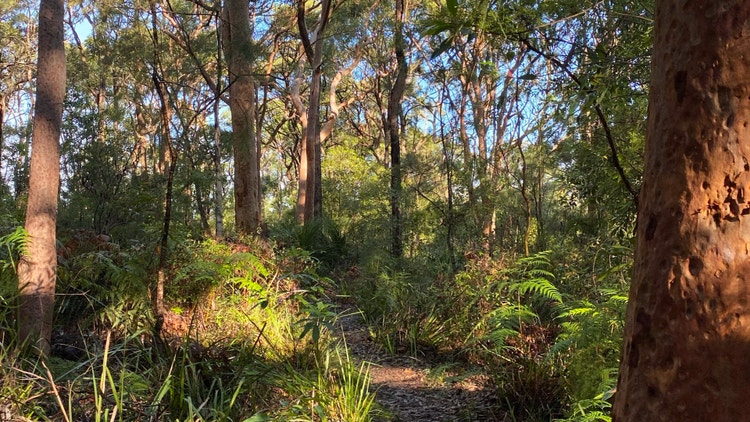

Program
What is that? How do you know? What features does it have? How does it survive here? These questions are explored as students conduct a series of fieldwork investigations into the classification and adaptations of native animals and plants in the Field of Mars Reserve. This program emphasises the application of Working Scientifically skills, and can be used to support an assessment task or Depth Study.
Activities
Invertebrate classification
Students will use scientific equipment and work in teams to collect, identify and observe invertebrates and their features. Students will construct a dichotomous key based on their observations.
Vertebrate adaptations
Through field journaling, students will observe the structural and behavioural adaptations of a native lizard.
Plant adaptations
Students will use dichotomous keys and fieldwork instruments to identify, observe and measure native plants and their structural features. Data will be used to explain how plants are adapted to the environment.
Aboriginal classification systems
Through sensory and hands-on activities, students will investigate the traditional uses of native plants to understand how they are classified by Darug Peoples.
Location

Field of Mars Reserve
Location information - including risk assessment and risk management advice, bus map and track overview.
Essential information
| Cost 2025 |
DoE school $26 per student – GST free Non-gov school $36 per student – GST free, minimum charge $750 |
| Cost 2026 |
DoE school $27 per student – GST free Non-gov school $37 per student – GST free, minimum charge $750 per class |
| Classes | Maximum 8 classes |
| Bring |
View Preparing for your excursion. Bring worksheet, writing materials, clipboard, medications, low-waste food, water bottle, sunblock, hat and raincoat in a backpack. Sports uniform recommended. |
| Welfare |
Rugged bushwalking. Some sites not wheelchair accessible - contact centre. May not suit recently unwell participants. For medical or special needs notify staff prior to program. |
| Extreme or wet weather | Program may be modified, postponed or cancelled due to predicted extreme temperatures, bush fire danger, heavy rainfall, high winds or dust storms. |
| Booking policy | Confirm student numbers and classes 7 days in advance. |
| Cancellation fee |
Less than 30 working school days – $600 Less than 7 working school days notice – full cost Weather or fire danger cancellation – $0 |
| Worksheet |
Schools are responsible for printing student worksheets. |
| Assessment task | Sample assessment task - Field guide |
| Supporting resources |
Australian plant adaptations fact sheet Eucalypt forest - Digital Book for iPads and Macs |
| Time | Class A, B, C, D | Class E, F, G, H |
| 9.30 - 10.00 |
Introduction and fieldwork preparation Food break and toilets |
|
| 10.00 - 11.30 | Plant investigations | Animal investigations |
| 11.30 - 12.00 | Food break and toilets | |
| 12.00 - 1.30 | Animal investigations | Plant investigations |
| 1.30 - 2.00 | Food break and toilets | |
| 2.00 - 2.15 | Conclusion and depart | |
Science 7-10 Syllabus (2023)
Outcomes
A student:
- describes the unique features of cells in living things and how structural features can be used to classify organisms SC4-CLS-01
- uses scientific tools and instruments for observations SC4-WS-01
- follows a planned procedure to undertake safe and valid investigations SC4-WS-04
- communicates scientific concepts and ideas using a range of communication forms SC4-WS-08
Content
Classification of living things
- Classify species using scientific conventions from the binomial system of classification, including kingdom, phylum, class, order, family, genus and species
- Conduct an investigation to observe and identify the similarities and differences of structural features within and between groups of organisms
- Investigate how organisms in an Australian habitat are adapted to their environment and document findings in a written scientific report
- Interpret dichotomous keys to identify organisms surveyed in an Australian habitat
- Explain how plants and animals are classified in Aboriginal and Torres Strait Islander Cultures based on their uses, forms and functions
Science and Technology 7-10 Syllabus © NSW Education Standards Authority (NESA) for and on behalf of the Crown in right of the State of New South Wales, 2023



